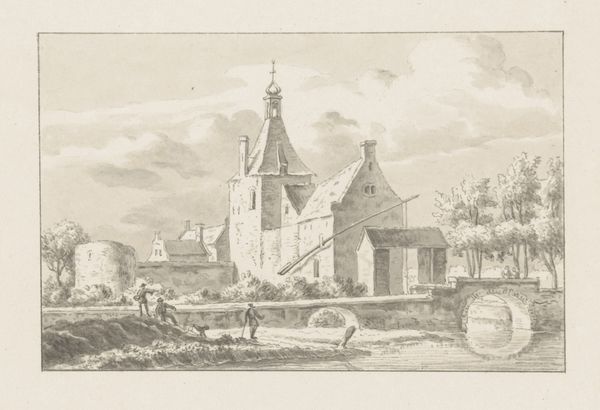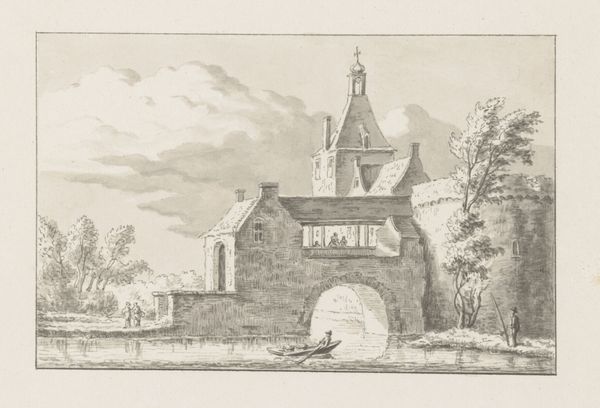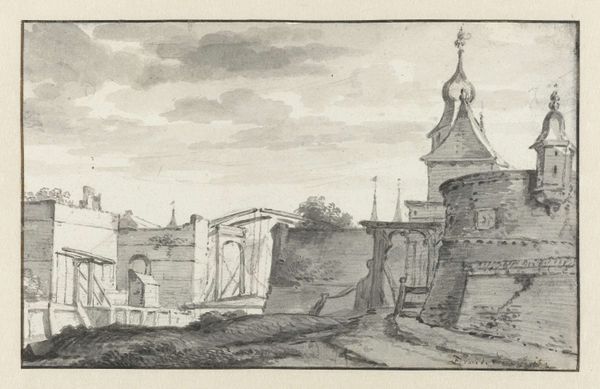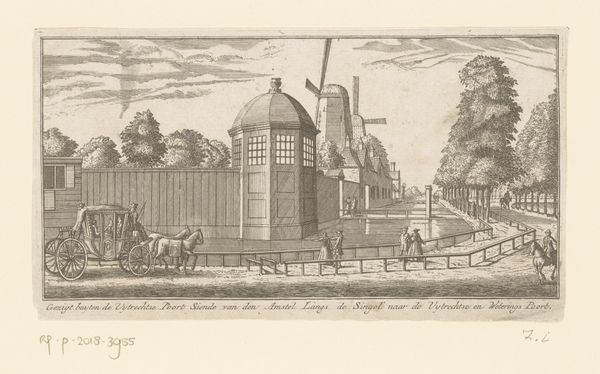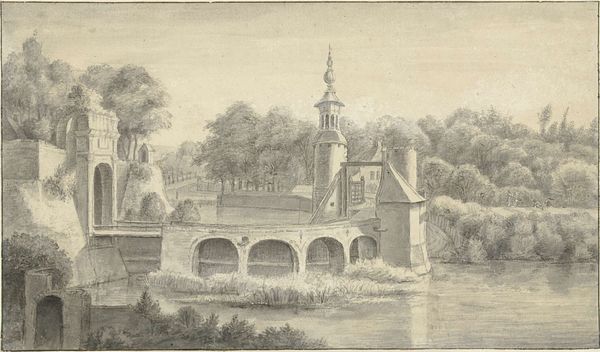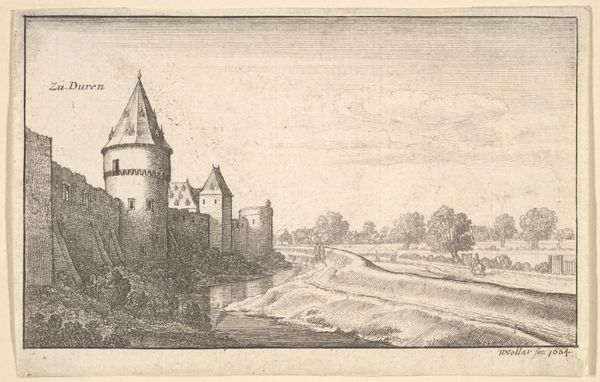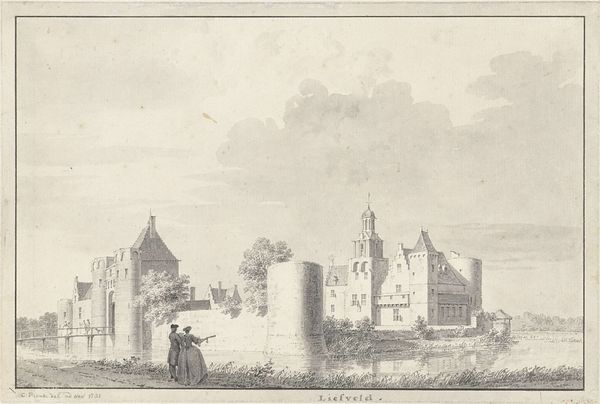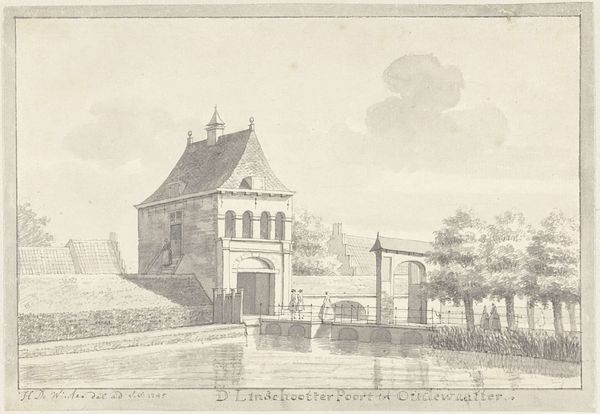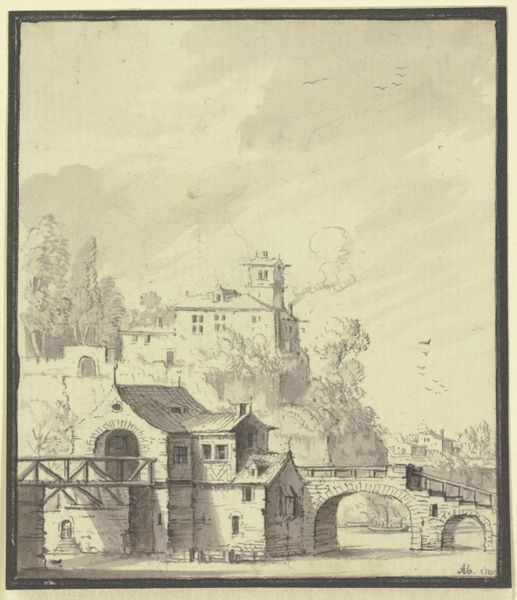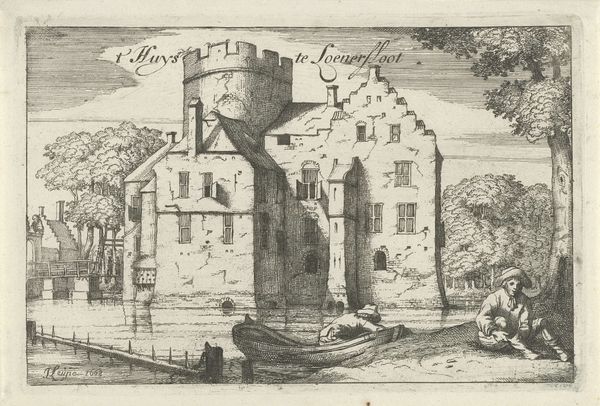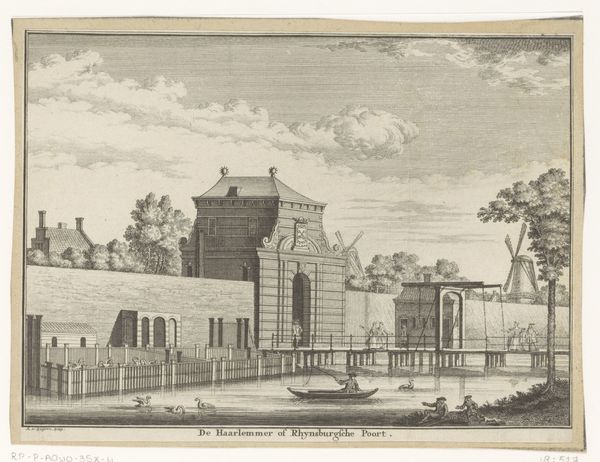
drawing, etching, ink
#
drawing
#
dutch-golden-age
#
etching
#
landscape
#
etching
#
ink
#
cityscape
Dimensions: height 76 mm, width 102 mm
Copyright: Rijks Museum: Open Domain
Curator: Here we have Hendrik de Winter's "De IJsselpoort te Oudewater," created around 1746, rendered with ink and etching techniques. Editor: Immediately, the drawing evokes a feeling of calm, doesn't it? The monochrome palette lends a timeless quality. The way the light filters across the gate is striking. Curator: De Winter's cityscapes are intriguing because they're not mere topographic records. Consider the choice of viewpoint: he situates us just outside the city gate, subtly mediating our access. The Ijsel Gate itself represents the political and economic power of Oudewater at this time. City gates like these controlled the flow of goods and people. Editor: And people are right there, on that little bridge, strolling back and forth in full daylight, but somehow, everything still looks like an escape. There’s something inherently exclusionary in a city gate. How did the artist negotiate that divide between inside and out, especially through the positioning of these small, pedestrian figures? What can we say about this moment when people of a small community seem to cross lines? Curator: Oudewater held strategic importance, located on the Holland-Utrecht border, giving it significance in regional conflicts and trade. The Ijsel Gate symbolizes its autonomy. But De Winter doesn’t depict dramatic events; his intent isn't to portray warfare. Rather, it is the peace and quiet order of a functioning civic space. Editor: But consider this serene image produced at a time rife with political maneuvering and anxieties of expanding empires, colonialism, or the slave trade, things always out there. We may need to accept the paradox: images like these simultaneously reinforce order, while the other narrative continues. De Winter is depicting a specific place but does he invite to consider a broader spectrum of reality. Curator: Perhaps it serves as a kind of utopian vision of the Dutch Republic, reflecting stability and civic pride. These depictions also boosted civic identities. Editor: It makes one think about who got to participate in the "civic" life being represented and celebrated here and whose experience may be silenced, erased, or unseen in these "calm" imageries. I can imagine a darker underbelly when I watch art of that era. Curator: I'll definitely look differently the next time! Editor: Indeed, understanding what these images obscure alongside what they reveal is crucial.
Comments
No comments
Be the first to comment and join the conversation on the ultimate creative platform.

